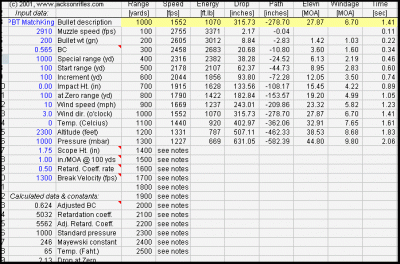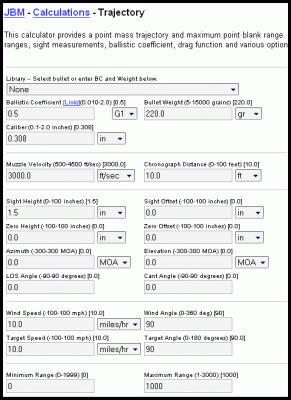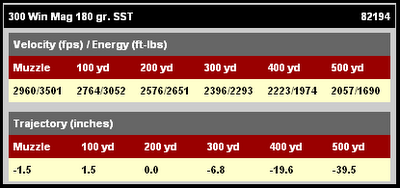In speaking with both experienced and inexperienced shooters I have come to the conclusion that the majority of shooters have no idea what their bullet does after it leaves their gun. It is essential in good shooting and sportsmanlike hunting to understand your bullets trajectory. To really get first-rate information it’s important to use an accurate ballistics calculator. There is no good excuse for not knowing what your bullet does as there are many free exterior ballistic calculators and websites available that can give you very accurate information. If you are going to shoot at game it is also important to verify the information out to at least the range you would shoot at game. By verify I mean take your gun and the loads you will be hunting with and shoot them at the ranges you will be hunting at to make sure the ballistic calculator matches what your bullet does in the real world.
There are many accurate free ballistic calculator programs and I am not going to try to list all of them. Below are a couple that I like.
UPDATE: We have just reviewed the “Shooter” ballistics program for Android phones. See the review Here.
Handloads.com has an excellent and very accurate free ballistic calculator on their website. It is easy to use and you can use it from any computer that has internet access. http://www.handloads.com/calc/index.html
I use it quite frequently as a reference. I like it because it has enough inputs to be accurate and yet it is still simple and fast to use.
My favorite free program is an excel spreadsheet that was created by Jackson rifles. They used the Pejsa drag coefficients to create a wonderful free program. The only drawback is that you have to have Microsoft Excel installed to use it. The program is extremely accurate but is a little more complicated to use. The numbers generated match very closely with high end programs like exbal.
The other great feature with this program is if you have a pocket pc, palm, or a phone with Excel on it you can load this on and take it with you to the range to run numbers. This Excel sheet can be downloaded at http://www.jacksonrifles.com/ballistics.htm
One of the other more popular calculators that is available for free is the JBM-Ballistic Calculator. It has the most options for complicated calculations. You can use the calculator at http://www.eskimo.com/~jbm/calculations/traj/traj.html
I have compiled a short list of terms that should be understood to be able to accurately fill out most of the programs available.
Velocity – How fast your bullet comes out of the muzzle of your gun. This is measured in feet per second. Velocity can be found using a chronograph or visiting your ammunition manufactures website. Most published velocities for ammo are from a 26 inch rifle barrel. If yours is shorter the rule of thumb is to subtract about 30 ft per second of velocity per inch of barrel.
This image was taken from Hornady’s website. Simply match your box of ammunition to the list available on your manufactures website. In this case Hornady give us the muzzle velocity and energy.
Bullet Weight – Is measured in grains. You can find this on your box of ammo or bullets.
BC or Ballistic Coefficient – Is a measure of how your bullet performs against the effects of gravity and wind. It is strongly influenced by bullet shape. For example a really long-boat tailed bullet will have a higher BC. Ballistic Coefficients become more important the further you shoot. You can find the BC of your bullet by visiting the manufactures website and finding either your exact bullet or load. Click Here for an excellent database of bullet B.C’s

This is another example from Hornady’s website. In this case I had to go look for the bullets used in our box of ammunition (from above) to find the BC. 
This image is from Sierra’s website and shows another way manufactures publish BC.
Sight Height – Distance between centerline of bore and centerline of scope or sights.
Temperature – Generally will be in Fahrenheit but can be in Celsius. The calculator will generally specify. Cold air is denser than warm or hot air and will create more resistance which will affect bullet flight.
Altitude – Measured in feet above sea level. The higher the altitude the less dense air becomes thus affecting bullet flight. GPS, topo maps, and Google are all good ways to find the altitude at which you will be shooting.
There are other inputs that differ from calculator to calculator. However, if you can enter accurate information into the main inputs (the ones listed above) you will find that the other inputs only make minuscule differences out to 500 yards.
